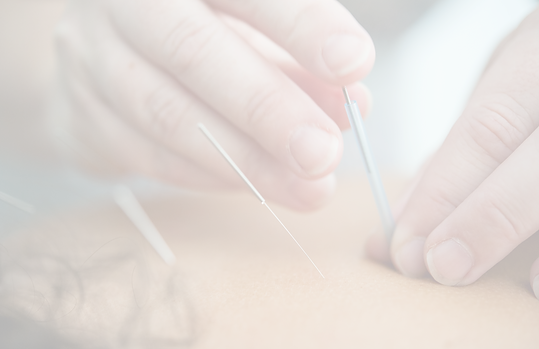
What Is Dry Needling?
Dry needling is a clinically proven technique used by qualified physiotherapists to manage pain, reduce muscle tension, and improve movement. It involves inserting thin, sterile needles into muscles, tendons, or near irritated nerves to treat trigger points, overuse injuries, and movement dysfunctions.
Unlike acupuncture, dry needling is based on modern Western anatomy and neuroscience — not traditional Chinese medicine or meridian theory.
At Pegasus Peak, located in South-West Sydney, dry needling is used as part of a holistic treatment plan to help you move better and feel better, faster.
How Does Dry Needling Work?
1. Trigger Point Disruption and Local Twitch Response (LTR)
When a needle is inserted into a myofascial trigger point, it can cause a reflex muscle contraction known as a local twitch response. This reduces excessive electrical activity at the motor end plate and allows the muscle to "reset."
Benefits:
-
Decreased muscle tightness
-
Improved flexibility
-
Enhanced neuromuscular control
2. Neurophysiological Pain Modulation
Dry needling stimulates sensory nerves (A-delta and C fibers), which activate the body’s natural pain control systems through the spinal cord and brain.
This promotes the release of endorphins, serotonin, and enkephalins — powerful natural pain relievers.
Result: Widespread pain relief, desensitization of chronic pain pathways, and improved tolerance to movement and rehab.
3. Microtrauma and Tissue Healing
Controlled needle insertion causes small, localized micro-injuries in dysfunctional tissue. This stimulates:
-
Increased local blood flow
-
Activation of healing and repair cells
Effective for:
-
Patellar and Achilles tendinopathy
-
Chronic muscle pain
-
Postural overload and repetitive strain
4. Muscle Inhibition and Tone Reset
Dry needling alters activity in muscle spindles, Golgi tendon organs, and motor control centers in the brain.
Clinical effect: Reduced muscle tone and guarding, improved joint mobility, and better movement efficiency.
Conditions Treated with Dry Needling
Dry needling at Pegasus Peak Physiotherapy can help treat:
-
Neck and lower back pain
-
Shoulder and rotator cuff injuries
-
Tension-type headaches and migraines
-
Hip, gluteal, and piriformis pain
-
Shin splints and calf tightness
-
TMJ (jaw) pain
-
Patellar, Achilles, and elbow tendinopathy
-
Chronic myofascial pain
-
General muscle overuse and stiffness
Whether you're an athlete, desk worker, or just someone dealing with stubborn pain, dry needling can complement your physio program.
What Dry Needling Is Not
Let’s clear the air — dry needling is often misunderstood. Here’s what it isn’t:
-
It’s not acupuncture (no meridians, no “chi”)
-
It doesn’t “detox” your body or release toxins
-
It’s not a standalone cure — it's one part of a complete physiotherapy plan
Is Dry Needling Safe?
Yes. When performed by a trained physiotherapist — like those at Pegasus Peak — dry needling is a safe, low-risk treatment.
Common side effects:
-
Mild soreness or bruising
-
Temporary fatigue
-
Occasional lightheadedness
Rare risks:
-
Infection (very rare with proper hygiene)
-
Pneumothorax (only a concern with deep needling in high-risk areas like the chest — handled with strict anatomical precision)
All patients are screened carefully and fully informed before treatment.
Why Choose Dry Needling at Pegasus Peak Physiotherapy?
At Pegasus Peak near you, we use dry needling alongside evidence-based treatments to help you:
-
Relieve pain
-
Restore mobility
-
Improve performance
-
Build long-term resilience
We combine dry needling with exercise rehab, manual therapy, education, and load management for long-term results — not just symptom relief.
Whether you're dealing with chronic tightness, acute muscle pain, or a sports injury, our physiotherapists use dry needling as part of a complete plan to get you back to your best.
Services
Have a look at some of the other services provided!





.png)
.png)
.png)
.png)
.png)
.png)
.png)
.png)
.png)